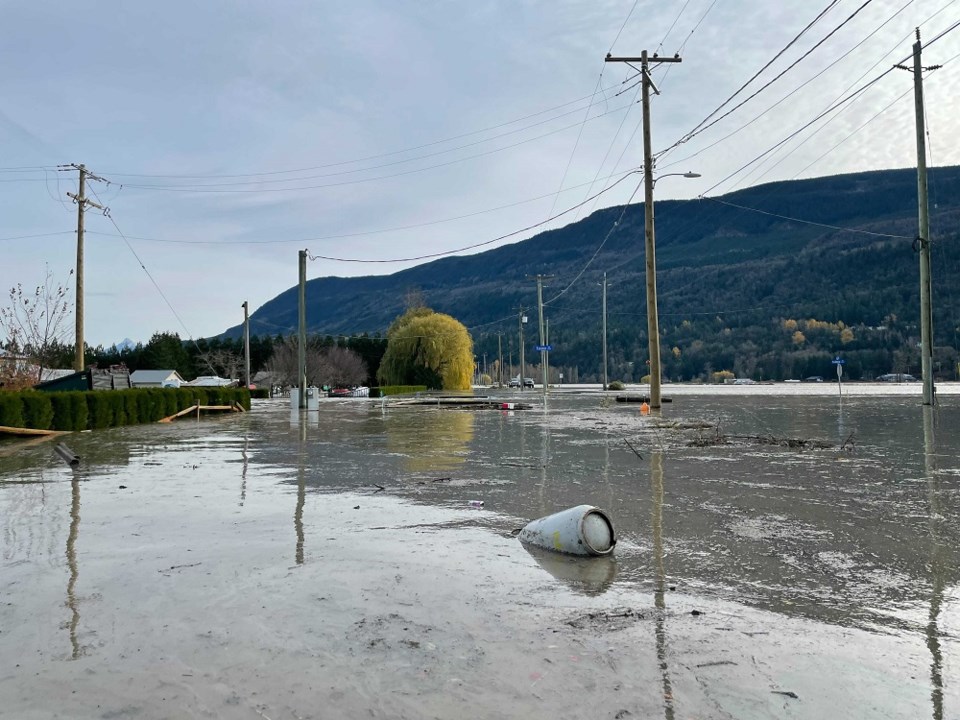After recent heavy rainstorms, we finally have relief that the worst of the summer drought and wildfires are over.
However, with memories of the 2021 atmospheric rivers still fresh in our minds, we must now focus on the potential risks of excessive fall rainfall to Fraser Valley communities.
In November 2021, over 1,100 properties, mainly farms, were flooded. Residents were stranded and local infrastructure was damaged. The Coquihalla Highway alone saw seven bridge collapses or areas of severe damage. This historic flood event resulted in billions of dollars in damages, making it one of Canada’s worst flood disasters ever.
These floods were a wake-up call for us in the Fraser Valley, and for British Columbians across the province.
It’s been three years since the November 2021 flooding and there is still an urgent need for investment from provincial leaders to ensure communities are protected when the next major flood event hits.
This year’s provincial election is an ideal opportunity for voters in the Fraser Valley to inform candidates from all political parties about the importance of investing in healthy floodplains and watershed security.
Ask our local candidates to commit to:
- Action to safeguard floodplain communities and farmland
- Urge your local candidates to commit to fully funding and implementing the B.C. Flood Strategy in 2025. This crucial initiative must be carried out in partnership with First Nations and local governments to protect communities from future flood risks.
- Support for regional floodplain planning
- High-risk areas like the Lower Fraser watershed and other vulnerable regions across B.C., need partnerships that require provincial funding to effectively address escalating flood threats and protect our homes, businesses and ecosystems.
- Invest in watershed security
- This will support projects that mitigate flood risks, provide technical assessments and ensure ongoing dialogue between local governments and First Nations that enhance regional preparedness.
At the Lower Fraser Floodplains Coalition, a First Nations-led initiative, we have been advocating for a comprehensive approach to flood resilience that incorporates nature-based solutions, reflects First Nations’ knowledge and leadership, supports collaborative decision-making at a regional level, and improves understanding of flood risks.
A prime example is the Fraser Valley Watersheds Coalition's work on the Vedder River’s north bank.
In collaboration with the Ts'elxwéyeqw Tribe, they rebuilt wetlands and stream channels between the primary and secondary dikes. This natural infrastructure absorbed floodwaters and withstood the high flows of November 2021. Agricultural lands were protected and salmon were able to spawn even at the height of the floods. This 2,000 m2 area is now resilient to both floods and droughts.
This kind of work needs to be scaled throughout the Valley and the province. The introduction of the provincial B.C. Flood Strategy this March was an important step.
While we view this strategy as “a good plan on paper,” it is now essential that the province follows up with long-term, dedicated funding to turn this strategy into action and bring people together to implement solutions on the ground.
The importance of bringing people together cannot be overstated. Water does not follow property lines, municipal boundaries, or electoral ridings. And some of the groups disproportionately affected by flooding in the Fraser Valley — such as First Nations and farmers — do not always see eye to eye. Sometimes, different populations in the same community have conflicting priorities when it comes to floodplain management.
For this reason, our group has hosted a series of meetings in recent years, bringing together diverse interests in the Fraser watershed, including farmers, local governments, and First Nations. We gather to discuss shared values, foster better understanding, and identify common goals to resolve water issues and prevent future conflict.
One clear agreement is the need for everyone to work together to ensure no one is left behind. To do this we need sustained provincial investments that equip local communities with the tools and resources they need to work together to manage flood and water challenges in their watersheds.
By coming together, communities from Hope to the Salish Sea can deliver a united message to all candidates running in the provincial election that we need serious provincial action and investments to get the job done.
Lina Azeez is habitats program director for Watershed Watch Salmon Society. Jason Lum is a Chilliwack City Councillor and Chair of the Fraser Valley Regional District. They are both members of the Lower Fraser Floodplains Coalition, a group of experts working alongside the Indigenous-led Emergency Planning Secretariat towards a principled and collaborative approach to flood resilience for communities of the Lower Fraser watershed.



